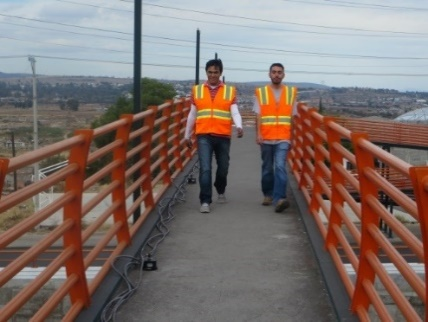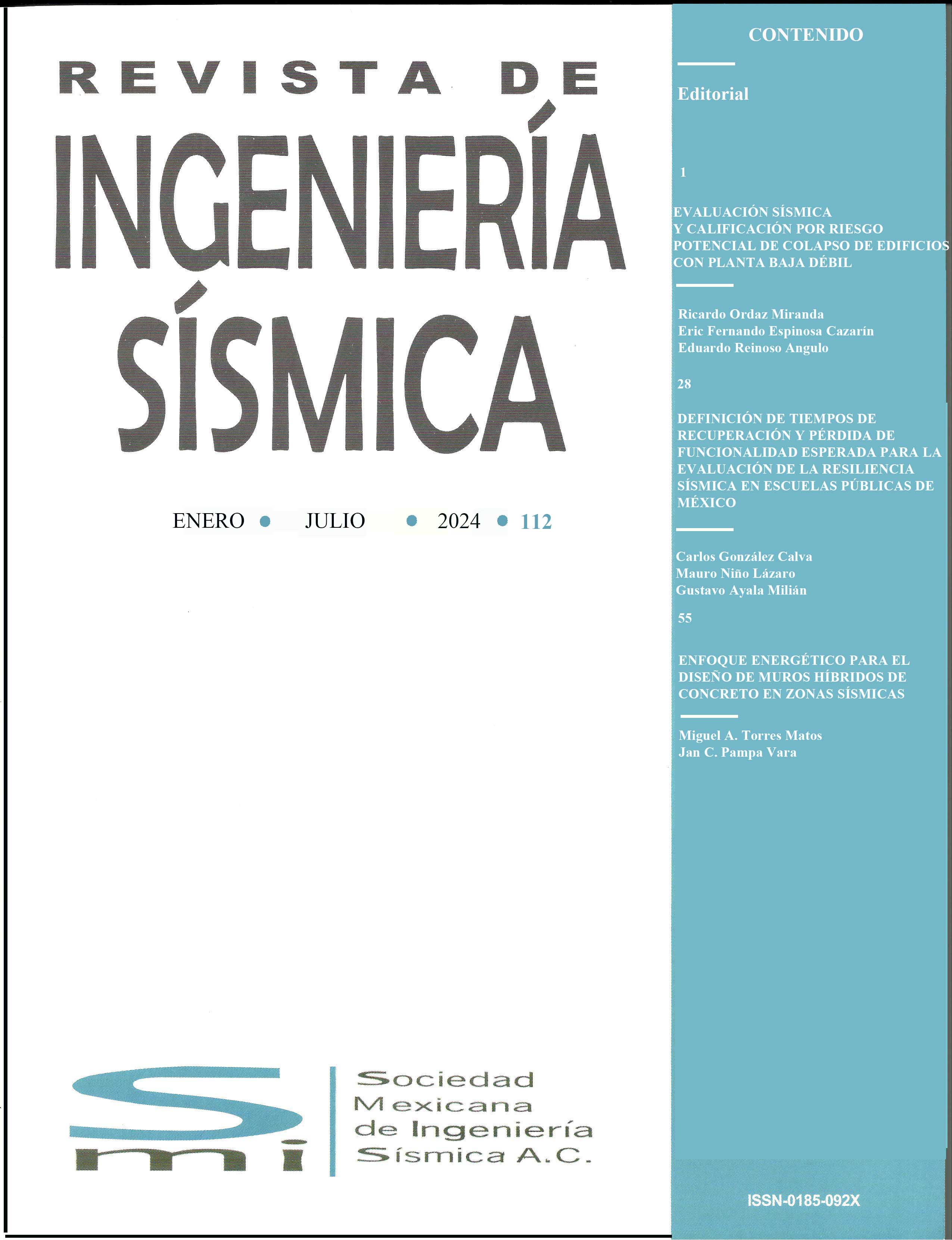DYNAMIC PROPERTIES AND SERVICEABILITY LIMIT STATE OF FOOTBRIDGES IN MEXICO
DOI:
https://doi.org/10.18867/ris.106.535Keywords:
footbridges, ambient vibration tests, forced vibration tests, serviceability limit stateAbstract
Currently there is no structural design code for footbridges in Mexico. The effect of the passage of pedestrians on the design of footbridges is considered through a uniformly distributed static load that represents the weight of pedestrians crossing over the bridge deck. The associated serviceability limit state is not reviewed because it is not considered a dynamic load on the design. The new aesthetic trend consists in designing more slender and flexible footbridges that are more susceptible to the human induced vibration, since they generate harmonic frequencies that can coincide with some of the frequencies of the structure and therefore produce resonant vibrations that can exceed the limit of comfort supported by humans. The different international design standards suggest that this type of bridges must be designed in such a way that its structural frequencies of vibration are excluded from the range of frequencies generated by pedestrians, an also propose limit values of comfort acceleration that should not be exceeded. The result of the ambient vibration tests that were performed in seven footbridges built in Mexico are shown in this paper, as well as the results of the forced vibration tests carried out in two of them. An analytical study is made of the different structures and it is concluded that most of these structures do not satisfy the serviceability limit state.
Downloads
References
Avellaneda, A (2018), “Aislamiento sísmico en puentes de México ubicados en la costa del Pacífico”, Tesis de Maestría en el área de Estructuras, Programa de Maestría y Doctorado, UNAM, México. https://ru.dgb.unam.mx/handle/DGB_UNAM/TES01000781739
Bachmann, H, y W Ammann (1987), “Vibrations in structures: Induced by man and machines”, Structural Engineering, International Association for Bridge and Structural Engineering IABSE. ISSN 0254-6302.
Bachmann, H, W Ammann, F Deischl, J Eisenmann, I Floegl, G H Hirsch, y L Steinbeisser (1995), Vibration Problems in Structures: Practical Guidelines, Springer Science, ISBN-13: 978-3764351489. https://doi.org/10.1007/978-3-0348-9231-5.
British Standard, UK N.A. EN 1991-2 (2002), Steel, concrete and composite bridges, University of Sheffield, England.
Computers and Structures Inc. (2009), SAP2000, ver., 14.0, Integrated Software for Analysis and Design, Berkeley.
Hernández, H, I Huergo, C Marín (2016), “Consideraciones de diseño para condiciones de servicio de puentes peatonales”, XX Congreso Nacional de Ingeniería Estructural, Mérida, Yucatán, México.
Hidalgo, E, J Campuzano, J Rodríguez, L Chias, H Reséndiz, H Sánchez, B Baranda, C Franco, M Híjar (2010), “Motivos de uso y no uso de puentes peatonales en la Ciudad de México: la perspectiva de los peatones”, Salud Pública de México, Vol. 52, No.6, pp. 502-510. DOI:10.1590/S0036-36342010000600004.
Huergo, I (2016), “Control de vibraciones verticales en puentes peatonales mediante amortiguadores de masa sintonizados”, Tesis de maestría en el área de Estructuras, Programa de Maestría y Doctorado, UNAM, México. DOI:10.13140/RG.2.2.15465.39526.
Helmut, W, D Pichler (2005), Ambient vibration monitoring, John Wiley and Sons, ISBN-10 0-470-02430-5. https://doi.org/10.1002/9780470061626.shm158
ISO, I (2007), Bases for Design of Structures: serviceability of buildings and walkways against vibrations, Geneva: International Organization for Standardization.
Research Fund for Coal and Steel (2008), Human induced vibrations of steel structures: Design of footbridges.
Román, I (2018), “Pruebas de vibración ambiental en siete puentes peatonales”, Tesis de licenciatura, Facultad de Estudios Superiores (FES) Acatlán UNAM, México. https://ru.dgb.unam.mx/handle/DGB_UNAM/TES01000782941
Sétra (2006), Evaluation du comportement vibratoire des passerelles piétonnes sous l´action des piétons, Association Franaise de Génie Civil. Sétra/AFGC.
Sistema de Puentes en México, SIPUMEX (2010), “Sistema de gestión y evaluación de Puentes de la red carretera Nacional libre de Peaje”, CAPUFE, SCT, México.
Wheeler, J (1982). “Prediction and control of pedestrian-induced vibration in footbridges”, Journal of the Structural Division, ASCE, 108(9), 2045-2065. https://doi.org/10.1061/JSDEAG.0006041






